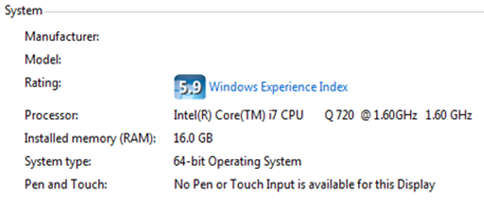Deploying StockTrader Application as Service to Private Cloud with System Center Virtual Machine (VMM) 2012 (1/5): Scenario and Lab Environment
To accelerate the learning of private cloud, a direct and effective way is to walk through the process of deploy one. And that is what this blog post and screencast series will deliver by detailing the essential operations and steps to deploy and manage a service deployed to a private cloud in SCVMM 2012 including:
- Part 1: Scenario and Lab Environment (This article)

- Part 2: Importing Service Template into Library Share
- Part 3: Changing Service Template
- Part 4: Deploying Service Template to Target Private Cloud
- Part 5: Managing Service Instance
Scenario
The process I am focusing on in this series starts from the signoff of a to-be-deployed application, here StockTrader. And in this series, I as a Private Cloud Administrator will walk through the process to “deploy” StockTrader as a service to a target private cloud. How the application was developed, configured, and packaged are not the subjects here. How it is to be deployed as a service to a target private cloud is. Deploying and managing an application as a service is an important concept and a key delivery of VMM 2012. The following further explains.
Notice that in VMM 2012 a service means specifically a set of VMs which collectively delivers a business function. At operational level, this set of VMs can be configured, deployed, and managed as a whole, i.e. one entity. This is achieved in VMM 2012 by employing a service template. By predefining the application architecture with the content, configurations, deployment operations, and procedures of an intended application in a VMM 2012 service template, we can now essentially deploy an application architecture with a running instance of an intended application, i.e. deploy an application as a service. And by managing the instance of a service template, we are now managing all associated resources of a running instance of an intended application which may encompasses multiple VM instances in multiple tiers.
StockTrader
This is an end-to-end sample application based on Windows Communication Foundation and ASP.NET. StockTrader is designed as a high-performance application that can seamlessly scale out across multiple servers with load-balancing and failover at the service-request level. In addition, the application can be deployed to Windows Azure Platform, a private cloud, or a hybrid environments with securely communication between Windows Azure instances and on-premise services. It illustrates many of the .NET enterprise development technologies for building highly scalable, rich "cloud-connected" applications.
The StockTrader application package I downloaded from https://connect.microsoft.com (find more details at the end of in this blog post) includes pre-baked syspreped vhd images, application code, scripts, app-v packages, and a service template which defines the multi-tier application architecture, the operations and procedures, the dependencies and intelligence, etc. with VM templates. We will use the provided service template to deploy StockTrader as a service to a target private cloud.
From a consumer’s point of view, regardless where and how StockTrader is deployed, it is a web application. The cloud connotation is relevant to mainly a service provider to signify the ability to deploy, exhibit, and manage an application with the 5-3-2 principle of cloud computing or NIST SP 800-145.
Lab Environment
The test lab is a simple environment including a windows domain with a VMM 2012 and a Hyper-V host as members. This lab is the starting point of a private cloud environment. It is a test lab, not an idea nor a realistic representation all components/functions needed to deliver a comprehensive private cloud solution. A comprehensive private solution including configuration management, deployment vehicle, process automation, service/help desk, virtual machine manager, self-service portal, etc. is what System Center 2012 delvers. For those who would like to build a test lab similar with mine, here is the hardware and software information:
Hardware
You will need 64-bit hardware to build a Windows domain with a domain controller, a SCVMM 2012 server, and a Hyper-V host to get started with a simple yet realistic enough test lab. The Hyper-V host need to have access to the hardware since it needs to be a root/parent partition run virtual machines. A great poster to help you better understand Hyper-V is available at https://aka.ms/free. The rest two, a domain controller and a SCVMM 2012 box, can be physical or virtual machines. And as needed, other System Center 2012 family members can be later added into the environment to form a comprehensive private cloud solution. Having a SCVMM 2012 server and a Hyper-V host into a Windows domain is the beginning and the essentials to start building a private cloud solution.
I set up the environment with my laptop where the booted Windows Server 2008 R2 SP1, i.e. the root partition, is a Hyper-V host as a member of the contoso.corp domain which includes a domain controller and a SCVMM 2012 server are both virtual machines and each running as guest OS. The following are the hardware information.
As far as the hardware is concern, RAM is a significant resource in virtualization and where I will spend my money.
Software
- Join https://connect.microsoft.com and download StockTrader for SCVMM 2012 RC build from System Center in the Datacenter and Cloud Connection. There may be an approval process which can take possibly a few days to grant the access. (As of April of 2012, StockTrader apparently is no longer available in Connect.)
- Download the evaluation copy of Windows Server 2008 R2 SP1 as needed since we will need it to run a Windows domain and a Hyper-V host.
- Download the evaluation copies of SCVMM 2012 and get all the requirements

